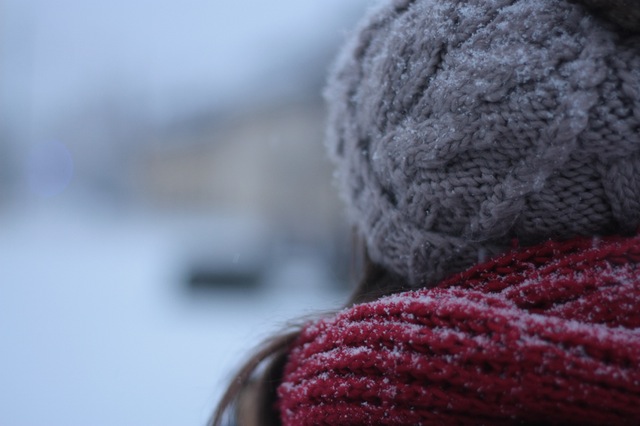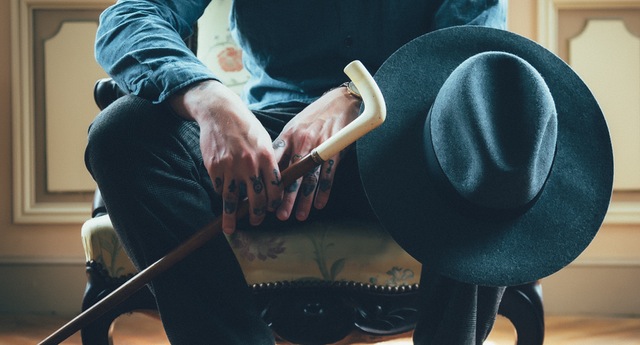What Panama Hat? Headwear in Russian Posted by Maria on Apr 14, 2016 in Uncategorized
Many of you have heard about the recent “Panama Papers” (#panamapapers) scandal, where several celebrities, state officials, and business owners were revealed to have had assets in offshore companies. One of Vladimir Putin’s friends also featured in the leak, prompting satirical posters depicting the Russian president wearing a Panama hat and asking “Кака́я Пана́ма?” (“What Panama [hat]?”)
This recent leak probably reminded Russians that Пана́ма (Panama) is a country as well as a kind of hat, пана́ма — the latter usage is by far the prevalent one in Russian. Russian has a fairly detailed vocabulary for headwear, with several non-interchangeable names. Let’s take a look at the kinds of headwear in Russian.
Ша́пка
 Image from pexels.com
Image from pexels.com
Ша́пка is probably the first word that comes to mind when talking about hats. It usually describes the type of headwear used to keep one’s head warm and may be knitted, made of fur, or other kinds of fabric. Stylish summer hats cannot be called ша́пка.
Спа́ли не раздева́ясь, в пальто́, ша́пках, а то и в ва́ленках (They slept in their clothes, in winter coats, hats, and sometimes even felt boots). [И. Грекова. Фазан (1984)]
You may also come across the diminutive form — шапочка — seen in “Кра́сная ша́почка” (“Little Red Riding Hood”).
Шляпа
 Image from pexels.com
Image from pexels.com
Шля́па refers to hats resembling a fedora. The hallmark of a шля́па is a brim. This type of hat is considered stylish and somewhat retro. A straw hat is соло́менная шля́п(к)а.
Все они́ бы́ли в пальто́, в шля́пах, оживлённо разгова́ривали ме́жду собо́ю (All of them were wearing coats and hats and were talking excitedly among themselves). [М. А. Булгаков. Записки покойника (Театральный роман) (1936-1937)]
A popular saying is “Де́ло в шля́пе,” meaning that everything is going to be great — something like “and Bob’s your uncle.”
Сообщи́те ему́ свой но́мер ― и де́ло в шля́пе (Give him your number, and you’re all set). [А. Шубин. Путь к благополучию (2000)]
Ке́пка
Image from stocksnap.io
Ке́пка is basically a baseball cap or any hat with a peak (also known as visor or bill in English). Earlier designs for this kind of hat could include a softer, beret-like top and a shorter peak. The more military-style variation of a ке́пка may be called фура́жка. The latter word is also more likely to be used by older people.
На голове́ у него́ под капюшо́ном оказа́лась тури́стская ке́пка с пластма́ссовым козырько́м (Underneath his hood, he turned out to be wearing a tourist baseball cap with a plastic peak). [Алексей Моторов. Преступление доктора Паровозова (2013)]
Пана́ма
image from stocksnap.io
The now-infamous пана́ма is really a summer hat, meant to protect one’s head from the sun. Unlike the rich-Westerner-in-the-tropics English “Panama hat,” the Russian пана́ма is primarily used to describe the hats worn by young children. This word evokes potentially unfashionable headwear donned by toddlers and Soviet-era pensioners. A stereotypical пана́ма, or пана́мка, is made of fabric and not straw.
Сре́днего во́зраста мужи́к в шо́ртах и пана́ме отшатну́лся в сто́рону, как бу́дто он пыта́лся подслу́шать ее́ разгово́р (A middle-aged man wearing shorts and a sun hat recoiled as if he had been trying to eavesdrop on her conversation). [Василий Аксенов. Новый сладостный стиль (2005)]

Build vocabulary, practice pronunciation, and more with Transparent Language Online. Available anytime, anywhere, on any device.





Comments:
Edgar:
I have spent the last three summers in various parts of Russia and the old term “kepka” is no longer used for baseball caps. These are now called universally
“beisbolki”
Maria:
@Edgar Thank you, Edgar; that’s a good point. I would definitely agree that beisbolka is the “hipper” term with the caveat that it can only describe the classic baseball cap with the stiff, spherical top, long, stiff peak, and an adjustable strap in the back. Any loose-fitting caps with a shorter peak would need to be described as kepka or even furazhka (now there’s an old-fashioned term).
Barsouk66:
I watched the 1981 movie “Reds” starring Warren Beatty, who played an American Marxist Writer (John Reed) who traveled to Russia during the Revolution and on a train, a Russian colleague noticed that Reed was reading a Russian-English phrase book. The Russian told Reed “После революции, я куплю Вам новою ШЛЯПУ.”* I only knew the word ШАПКА at the time and found out that ШЛЯПА means a rimmed hat that “bourgeois” men wore at the time. Thus my journey into building are richer Russian vocabulary through movies began.
* After the Revolution, I will buy you a new hat
Maria:
@Barsouk66 That’s a great story! I like discovering how things are used in the language through film, music, and media, as well. I never trust myself to use vocabulary correctly after just seeing it in my textbook. During my (very brief) stint at learning Arabic, I tried asking a friend if that was his bottle only to discover that the word I was using meant “flask” in his region.